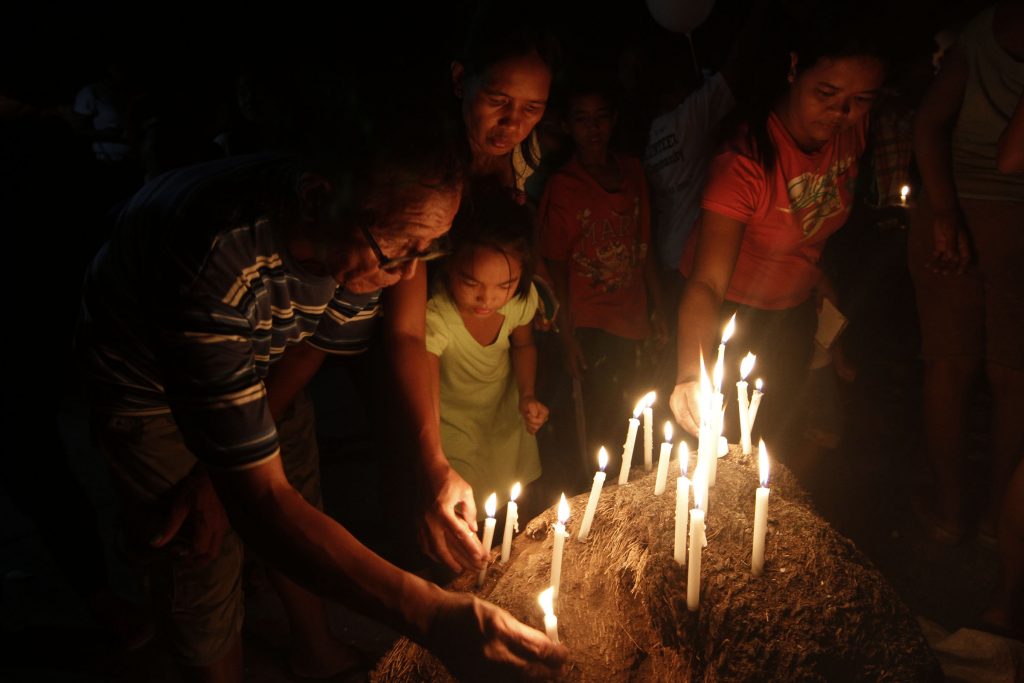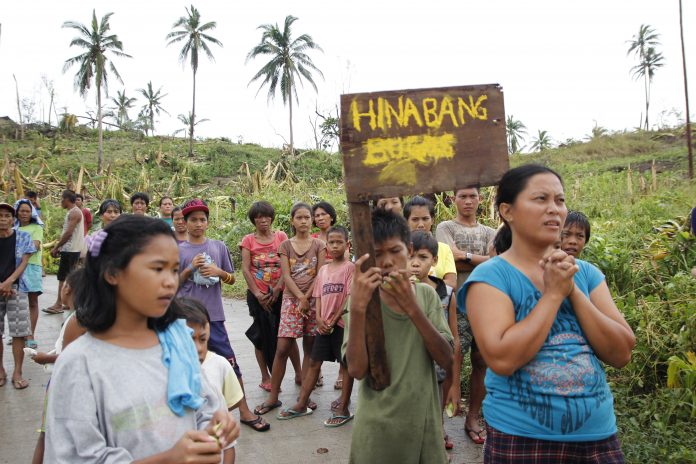There was a creeping sense of unease in the back of Ronan Renz Napoto’s mind as he looked up the blue sky on Saturday afternoon, October 31, in the town of Catarman, Northern Samar province.
“We had a very calm and sunny weather before the deadly typhoon,” recalled Napoto who survived super typhoon Haiyan in 2013.
“Nobody thought that the next day would be the worst nightmare we could ever imagine,” said the 22-year-old survivor.
As super typhoon “Rolly” (international name: Goni), dubbed as the world’s most powerful tropical cyclone yet in 2020, hit the Philippines on Sunday, November 1, those who experienced the wrath of “Haiyan” could not help but recall the agony they went through.
“The sky this afternoon is disturbing,” said Nopoto, who now works for an international aid agency. “This feeling is triggering our half-inch buried traumas from super typhoon Haiyan,” he said.
Napoto was fourth-year high school student when he saw how “Haiyan” flattened his village in Quinapondan, Eastern Samar province, on Nov. 8, 2013.
“Haiyan,” known as “the strongest tropical cyclone on record to make landfall,” pummeled through the central Philippines with sustained winds of 305 km/h, damaging over one million houses and displacing about 4.1 million people. At least 6,000 people, mostly from Eastern Visayas region, died.
“As we are about to remember [Haiyan] on its seventh year next week, we are again threatened by another potential super typhoon. It’s extremely tiring,” said Napoto.
“Every year, we always get affected by these climate change impacts and yet we don’t do so much about it,” added the young man.
“I hope that our story of loss and tragedy ends on our experience from 2013. We would not want others to feel what we had back then. It’s never easy. Some have yet to recover, most are still struggling internally,” he added.
He said the stories from “Haiyan” should be a learning experience and warning to everyone.
“Please take this as an opportunity to prepare. Know the hazards in your area. Evacuate to a safer place. Store enough foods and potable water, and medicines. Charge your phones and flashlights. Be vigilant,” Napoto reminded.
Dr. Ronelo Al Firmo, assistant regional director of the Department of Education in the Bicol region, also recalled his experience seven years ago.
“I survived the wind, rain, and storm surge. In a twist of fate, I am about to experience again a super typhoon,” he said Firmo.
During the onslaught of “Haiyan,” Firmo was the schools division superintendent in the province of Leyte.

Meanwhile, the bishop of the Diocese of Borongan in the central Philippines called on the faithful to heed the call of Pope Francis for “ecological conversion.”
In a pastoral letter for to mark the 7th anniversary of super typhoon Yolanda (international name: Haiyan), which hit the country on Nov. 8, 2013, Bishop Crispin Varquez of Borongan urged the faithful to “remember God’s love and mercy for our people.”
“It has been seven years since super typhoon Haiyan or Yolanda came our way. Despite the pandemic we are going through, we still have fresh memories of the horrors we went through … and the painful months and years after,” said the prelate.
The pastoral message was released as super typhoon Goni hit the country on Sunday, November 1.
“The fact that most of that is now only a painful memory testifies to God’s saving acts at work in our own history,” said Bishop Varquez. “As we thank the Lord, let us also thank those who helped us. They too were agents of God’s mighty hand,” he added.
“Our planet and our poor cry for our attention and right action to save our common home and our more vulnerable brethren in the human family,” said the prelate.
“For this to happen we must heed Pope Francis’ call for ecological conversion. We must move away from the sins of environmental abuse and neglect to environmental and social justice to show that we are truly returning to the Lord,” added Bishop Varquez.
The prelate said that while the challenges of super typhoon Haiyan helped strengthen the faith of the people, lessons from the past should help Filipinos face the pandemic and other threats “with hope and an enthusiasm to do acts of charity to others who suffer and are in need.”
“Goni” made its second landfall in the town of Tiwi in Albay province at 7:20 a.m. on Sunday, November 1, bringing violent winds and torrential rain.
Its first landfall was in Bato town, Catanduanes, at 4:50 a.m. on Sunday.
The Philippine Atmospheric, Geophysical, and Astronomical Services Administration said in a bulletin released past 8 a.m. that Rolly is moving west at the same speed of 25 km/h, after hitting the municipality of Tiwi.
The super typhoon maintained its maximum sustained winds of 225 km/h, but its gustiness increased from 280 km/h to 310 km/h.
It is the world’s strongest tropical cyclone for 2020.









